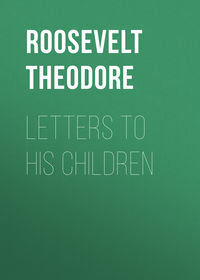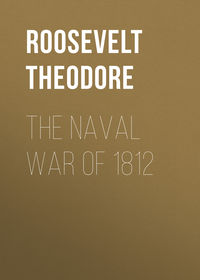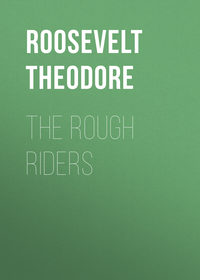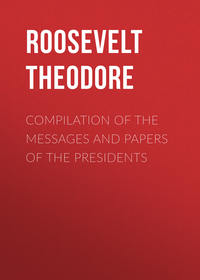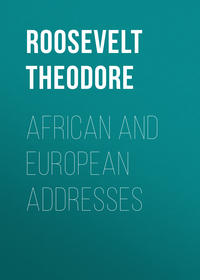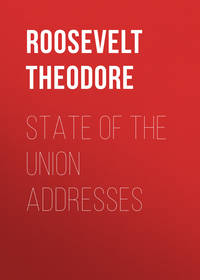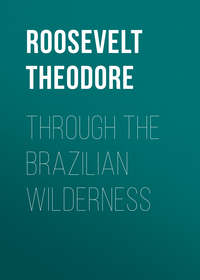 полная версия
полная версияThe Winning of the West, Volume 1
Thus it is that there are so many dark and bloody pages in the book of border warfare, that grim and iron-bound volume, wherein we read how our forefathers won the wide lands that we inherit. It contains many a tale of fierce heroism and adventurous ambition, of the daring and resolute courage of men and the patient endurance of women; it shows us a stern race of freemen who toiled hard, endured greatly, and fronted adversity bravely, who prized strength and courage and good faith, whose wives were chaste, who were generous and loyal to their friends. But it shows us also how they spurned at restraint and fretted under it, how they would brook no wrong to themselves, and yet too often inflicted wrong on others; their feats of terrible prowess are interspersed with deeds of the foulest and most wanton aggression, the darkest treachery, the most revolting cruelty; and though we meet with plenty of the rough, strong, coarse virtues, we see but little of such qualities as mercy for the fallen, the weak, and the helpless, or pity for a gallant and vanquished foe.
Among the Indians of the northwest, generally so much alike that we need pay little heed to tribal distinctions, there was one body deserving especial and separate mention. Among the turbulent and jarring elements tossed into wild confusion by the shock of the contact between savages and the rude vanguard of civilization, surrounded and threatened by the painted warriors of the woods no less than by the lawless white riflemen who lived on the stump-dotted clearings, there dwelt a group of peaceful beings who were destined to suffer a dire fate in the most lamentable and pitiable of all the tragedies which were played out in the heart of this great wilderness. These were the Moravian Indians.91 They were mostly Delawares, and had been converted by the indefatigable German missionaries, who taught the tranquil, Quaker-like creed of Count Zinzendorf. The zeal and success of the missionaries were attested by the marvellous change they had wrought in these converts; for they had transformed them in one generation from a restless, idle, blood-thirsty people of hunters and fishers, into an orderly, thrifty, industrious folk, believing with all their hearts the Christian religion in the form in which their teachers both preached and practised it. At first the missionaries, surrounded by their Indian converts, dwelt in Pennsylvania; but, harried and oppressed by their white neighbors, the submissive and patient Moravians left their homes and their cherished belongings, and in 1771 moved out into the wilderness northwest of the Ohio. It is a bitter and unanswerable commentary on the workings of a non-resistant creed when reduced to practice, that such outrages and massacres as those committed on these helpless Indians were more numerous and flagrant in the colony the Quakers governed than in any other; their vaunted policy of peace, which forbade them to play a true man's part and put down wrong-doing, caused the utmost possible evil to fall both on the white man and the red. An avowed policy of force and fraud carried out in the most cynical manner could hardly have worked more terrible injustice; their system was a direct incentive to crime and wrong-doing between the races, for they punished the aggressions of neither, and hence allowed any blow to always fall heaviest on those least deserving to suffer. No other colony made such futile, contemptible efforts to deal with the Indian problem; no other colony showed such supine, selfish helplessness in allowing her own border citizens to be mercilessly harried; none other betrayed such inability to master the hostile Indians, while, nevertheless, utterly failing to protect those who were peaceful and friendly.
When the Moravians removed beyond the Ohio, they settled on the banks of the Muskingum, made clearings in the forest, and built themselves little towns, which they christened by such quaint names as Salem and Gnadenhutten; names that were pathetic symbols of the peace which the harmless and sadly submissive wanderers so vainly sought. Here, in the forest, they worked and toiled, surrounded their clean, neatly kept villages with orchards and grain-fields, bred horses and cattle, and tried to do wrong to no man; all of each community meeting every day to worship and praise their Creator. But the missionaries who had done so much for them had also done one thing which more than offset it all: for they had taught them not to defend themselves, and had thus exposed the poor beings who trusted their teaching to certain destruction. No greater wrong can ever be done than to put a good man at the mercy of a bad, while telling him not to defend himself or his fellows; in no way can the success of evil be made surer and quicker; but the wrong was peculiarly great when at such a time and in such a place the defenceless Indians were thrust between the anvil of their savage red brethren and the hammer of the lawless and brutal white borderers. The awful harvest which the poor converts reaped had in reality been sown for them by their own friends and would-be benefactors.
So the Moravians, seeking to deal honestly with Indians and whites alike, but in return suspected and despised by both, worked patiently year in and year out, as they dwelt in their lonely homes, meekly awaiting the stroke of the terrible doom which hung over them.
CHAPTER V.
THE BACKWOODSMEN OF THE ALLEGHANIES. 1769-1774
Along the western frontier of the colonies that were so soon to be the United States, among the foothills of the Alleghanies, on the slopes of the wooded mountains, and in the long trough-like valleys that lay between the ranges, dwelt a peculiar and characteristically American people.
These frontier folk, the people of the up-country, or back-country, who lived near and among the forest-clad mountains, far away from the long-settled districts of flat coast plain and sluggish tidal river, were known to themselves and to others as backwoodsmen. They all bore a strong likeness to one another in their habits of thought and ways of living, and differed markedly from the people of the older and more civilized communities to the eastward. The western border of our country was then formed by the great barrier-chains of the Alleghanies, which ran north and south from Pennsylvania through Maryland, Virginia, and the Carolinas,92 the trend of the valleys being parallel to the sea-coast, and the mountains rising highest to the southward. It was difficult to cross the ranges from east to west, but it was both easy and natural to follow the valleys between. From Fort Pitt to the high hill-homes of the Cherokees this great tract of wooded and mountainous country possessed nearly the same features and characteristics, differing utterly in physical aspect from the alluvial plains bordering the ocean.
So, likewise, the backwoods mountaineers who dwelt near the great watershed that separates the Atlantic streams from the springs of the Watauga, the Kanawha, and the Monongahela were all cast in the same mould, and resembled each other much more than any of them did their immediate neighbors of the plains. The backwoodsmen of Pennsylvania had little in common with the peaceful population of Quakers and Germans who lived between the Delaware and the Susquehanna; and their near kinsmen of the Blue Ridge and the Great Smoky Mountains were separated by an equally wide gulf from the aristocratic planter communities that flourished in the tide-water regions of Virginia and the Carolinas. Near the coast the lines of division between the colonies corresponded fairly well with the differences between the populations; but after striking the foothills, though the political boundaries continued to go east and west, those both of ethnic and of physical significance began to run north and south.
The backwoodsmen were Americans by birth and parentage, and of mixed race; but the dominant strain in their blood was that of the Presbyterian Irish—the Scotch-Irish as they were often called. Full credit has been awarded the Roundhead and the Cavalier for their leadership in our history; nor have we been altogether blind to the deeds of the Hollander and the Huguenot; but it is doubtful if we have wholly realized the importance of the part played by that stern and virile people, the Irish whose preachers taught the creed of Knox and Calvin. These Irish representatives of the Covenanters were in the west almost what the Puritans were in the northeast, and more than the Cavaliers were in the south. Mingled with the descendants of many other races, they nevertheless formed the kernel of the distinctively and intensely American stock who were the pioneers of our people in their march westward, the vanguard of the army of fighting settlers, who with axe and rifle won their way from the Alleghanies to the Rio Grande and the Pacific.93
The Presbyterian Irish were themselves already a mixed people. Though mainly descended from Scotch ancestors—who came originally from both lowlands and highlands, from among both the Scotch Saxons and the Scotch Celts,94—many of them were of English, a few of French Huguenot,95 and quite a number of true old Milesian Irish96 extraction. They were the Protestants of the Protestants; they detested and despised the Catholics, whom their ancestors had conquered, and regarded the Episcopalians by whom they themselves had been oppressed, with a more sullen, but scarcely less intense, hatred.97 They were a truculent and obstinate people, and gloried in the warlike renown of their forefathers, the men who had followed Cromwell, and who had shared in the defence of Derry and in the victories of the Boyne and Aughrim.98
They did not begin to come to America in any numbers till after the opening of the eighteenth century; by 1730 they were fairly swarming across the ocean, for the most part in two streams, the larger going to the port of Philadelphia, the smaller to the port of Charleston.99 Pushing through the long settled lowlands of the seacoast, they at once made their abode at the foot of the mountains, and became the outposts of civilization. From Pennsylvania, whither the great majority had come, they drifted south along the foothills, and down the long valleys, till they met their brethren from Charleston who had pushed up into the Carolina back-country. In this land of hills, covered by unbroken forest, they took root and flourished, stretching in a broad belt from north to south, a shield of sinewy men thrust in between the people of the seaboard and the red warriors of the wilderness. All through this region they were alike; they had as little kinship with the Cavalier as with the Quaker; the west was won by those who have been rightly called the Roundheads of the south, the same men who, before any others, declared for American independence.100
The two facts of most importance to remember in dealing with our pioneer history are, first, that the western portions of Virginia and the Carolinas were peopled by an entirely different stock from that which had long existed in the tide-water regions of those colonies; and, secondly, that, except for those in the Carolinas who came from Charleston, the immigrants of this stock were mostly from the north, from their great breeding-ground and nursery in western Pennsylvania.101
That these Irish Presbyterians were a bold and hardy race is proved by their at once pushing past the settled regions, and plunging into the wilderness as the leaders of the white advance. They were the first and last set of immigrants to do this; all others have merely followed in the wake of their predecessors. But, indeed, they were fitted to be Americans from the very start; they were kinsfolk of the Covenanters; they deemed it a religious duty to interpret their own Bible, and held for a divine right the election of their own clergy. For generations their whole ecclesiastic and scholastic systems had been fundamentally democratic. In the hard life of the frontier they lost much of their religion, and they had but scant opportunity to give their children the schooling in which they believed; but what few meeting-houses and school-houses there were on the border were theirs.102 The numerous families of colonial English who came among them adopted their religion if they adopted any. The creed of the backwoodsman who had a creed at all was Presbyterianism; for the Episcopacy of the tide-water lands obtained no foothold in the mountains, and the Methodists and Baptists had but just begun to appear in the west when the Revolution broke out.103
These Presbyterian Irish were, however, far from being the only settlers on the border, although more than any others they impressed the stamp of their peculiar character on the pioneer civilization of the west and southwest. Great numbers of immigrants of English descent came among them from the settled districts on the east; and though these later arrivals soon became indistinguishable from the people among whom they settled, yet they certainly sometimes added a tone of their own to backwoods society, giving it here and there a slight dash of what we are accustomed to consider the distinctively southern or cavalier spirit.104 There was likewise a large German admixture, not only from the Germans of Pennsylvania, but also from those of the Carolinas.105 A good many Huguenots likewise came,106 and a few Hollanders107 and even Swedes,108 from the banks of the Delaware, or perhaps from farther off still.
A single generation, passed under the hard conditions of life in the wilderness, was enough to weld together into one people the representatives of these numerous and widely different races; and the children of the next generation became indistinguishable from one another. Long before the first Continental Congress assembled, the backwoodsmen, whatever their blood, had become Americans, one in speech, thought, and character, clutching firmly the land in which their fathers and grandfathers had lived before them. They had lost all remembrance of Europe and all sympathy with things European; they had become as emphatically products native to the soil as were the tough and supple hickories out of which they fashioned the handles of their long, light axes. Their grim, harsh, narrow lives were yet strangely fascinating and full of adventurous toil and danger; none but natures as strong, as freedom-loving, and as full of bold defiance as theirs could have endured existence on the terms which these men found pleasurable. Their iron surroundings made a mould which turned out all alike in the same shape. They resembled one another, and they differed from the rest of the world—even the world of America, and infinitely more the world of Europe—in dress, in customs, and in mode of life.
Where their lands abutted on the more settled districts to the eastward, the population was of course thickest, and their peculiarities least. Here and there at such points they built small backwoods burgs or towns, rude, straggling, unkempt villages, with a store or two, a tavern,—sometimes good, often a "scandalous hog-sty," where travellers were devoured by fleas, and every one slept and ate in one room,109—a small log school-house, and a little church, presided over by a hard-featured Presbyterian preacher, gloomy, earnest, and zealous, probably bigoted and narrow-minded, but nevertheless a great power for good in the community.110
However, the backwoodsmen as a class neither built towns nor loved to dwell therein. They were to be seen at their best in the vast, interminable forests that formed their chosen home. They won and kept their lands by force, and ever lived either at war or in dread of war. Hence they settled always in groups of several families each, all banded together for mutual protection. Their red foes were strong and terrible, cunning in council, dreadful in battle, merciless beyond belief in victory. The men of the border did not overcome and dispossess cowards and weaklings; they marched forth to spoil the stout-hearted and to take for a prey the possessions of the men of might. Every acre, every rood of ground which they claimed had to be cleared by the axe and held with the rifle. Not only was the chopping down of the forest the first preliminary to cultivation, but it was also the surest means of subduing the Indians, to whom the unending stretches of choked woodland were an impenetrable cover behind which to move unseen, a shield in making assaults, and a strong tower of defence in repelling counter-attacks. In the conquest of the west the backwoods axe, shapely, well-poised, with long haft and light head, was a servant hardly standing second even to the rifle; the two were the national weapons of the American backwoodsman, and in their use he has never been excelled.
When a group of families moved out into the wilderness they built themselves a station or stockade fort; a square palisade of upright logs, loop-holed, with strong blockhouses as bastions at the corners. One side at least was generally formed by the backs of the cabins themselves, all standing in a row; and there was a great door or gate, that could be strongly barred in case of need. Often no iron whatever was employed in any of the buildings. The square inside contained the provision sheds and frequently a strong central blockhouse as well. These forts, of course, could not stand against cannon, and they were always in danger when attacked with fire; but save for this risk of burning they were very effectual defences against men without artillery, and were rarely taken, whether by whites or Indians, except by surprise. Few other buildings have played so important a part in our history as the rough stockade fort of the backwoods.
The families only lived in the fort when there was war with the Indians, and even then not in the winter. At other times they all separated out to their own farms, universally called clearings, as they were always made by first cutting off the timber. The stumps were left to dot the fields of grain and Indian corn. The corn in especial was the stand-by and invariable resource of the western settler; it was the crop on which he relied to feed his family, and when hunting or on a war trail the parched grains were carried in his leather wallet to serve often as his only food. But he planted orchards and raised melons, potatoes, and many other fruits and vegetables as well; and he had usually a horse or two, cows, and perhaps hogs and sheep, if the wolves and bears did not interfere. If he was poor his cabin was made of unhewn logs, and held but a single room; if well-to-do, the logs were neatly hewed, and besides the large living- and eating-room with its huge stone fireplace, there was also a small bedroom and a kitchen, while a ladder led to the loft above, in which the boys slept. The floor was made of puncheons, great slabs of wood hewed carefully out, and the roof of clapboards. Pegs of wood were thrust into the sides of the house, to serve instead of a wardrobe; and buck antlers, thrust into joists, held the ever-ready rifles. The table was a great clapboard set on four wooden legs; there were three-legged stools, and in the better sort of houses old-fashioned rocking-chairs.111 The couch or bed was warmly covered with blankets, bear-skins, and deer-hides.112
These clearings lay far apart from one another in the wilderness. Up to the door-sills of the log-huts stretched the solemn and mysterious forest. There were no openings to break its continuity; nothing but endless leagues on leagues of shadowy, wolf-haunted woodland. The great trees towered aloft till their separate heads were lost in the mass of foliage above, and the rank underbrush choked the spaces between the trunks. On the higher peaks and ridge-crests of the mountains there were straggling birches and pines, hemlocks and balsam firs;113 elsewhere, oaks, chestnuts, hickories, maples, beeches, walnuts, and great tulip trees grew side by side with many other kinds. The sunlight could not penetrate the roofed archway of murmuring leaves; through the gray aisles of the forest men walked always in a kind of mid-day gloaming. Those who had lived in the open plains felt when they came to the backwoods as if their heads were hooded. Save on the border of a lake, from a cliff top, or on a bald knob—that is, a bare hill-shoulder,—they could not anywhere look out for any distance.
All the land was shrouded in one vast forest. It covered the mountains from crest to river-bed, filled the plains, and stretched in sombre and melancholy wastes towards the Mississippi. All that it contained, all that lay hid within it and beyond it, none could tell; men only knew that their boldest hunters, however deeply they had penetrated, had not yet gone through it, that it was the home of the game they followed and the wild beasts that preyed on their flocks, and that deep in its tangled depths lurked their red foes, hawk-eyed and wolf-hearted.
Backwoods society was simple, and the duties and rights of each member of the family were plain and clear. The man was the armed protector and provider, the bread-winner; the woman was the housewife and child-bearer. They married young and their families were large, for they were strong and healthy, and their success in life depended on their own stout arms and willing hearts. There was everywhere great equality of conditions. Land was plenty and all else scarce; so courage, thrift, and industry were sure of their reward. All had small farms, with the few stock necessary to cultivate them; the farms being generally placed in the hollows, the division lines between them, if they were close together, being the tops of the ridges and the watercourses, especially the former. The buildings of each farm were usually at its lowest point, as if in the centre of an amphitheatre.114 Each was on an average of about 400 acres,115 but sometimes more.116 Tracts of low, swampy grounds, possibly some miles from the cabin, were cleared for meadows, the fodder being stacked, and hauled home in winter.
Each backwoodsman was not only a small farmer but also a hunter; for his wife and children depended for their meat upon the venison and bear's flesh procured by his rifle. The people were restless and always on the move. After being a little while in a place, some of the men would settle down permanently, while others would again drift off, farming and hunting alternately to support their families.117 The backwoodsman's dress was in great part borrowed from his Indian foes. He wore a fur cap or felt hat, moccasins, and either loose, thin trousers, or else simply leggings of buckskin or elk-hide, and the Indian breech-clout. He was always clad in the fringed hunting-shirt, of homespun or buckskin, the most picturesque and distinctively national dress ever worn in America. It was a loose smock or tunic, reaching nearly to the knees, and held in at the waist by a broad belt, from which hung the tomahawk and scalping-knife.118 His weapon was the long, small-bore, flint-lock rifle, clumsy, and ill-balanced, but exceedingly accurate. It was very heavy, and when upright, reached to the chin of a tall man; for the barrel of thick, soft iron, was four feet in length, while the stock was short, and the butt scooped out. Sometimes it was plain, sometimes ornamented. It was generally bored out—or, as the expression then was, "sawed out"—to carry a ball of seventy, more rarely of thirty or forty, to the pound; and was usually of backwoods manufacture.119 The marksman almost always fired from a rest, and rarely at a very long range; and the shooting was marvellously accurate.120
In the backwoods there was very little money; barter was the common form of exchange, and peltries were often used as a circulating medium, a beaver, otter, fisher, dressed buckskin or large bearskin being reckoned as equal to two foxes or wildcats, four coons, or eight minks.121 A young man inherited nothing from his father but his strong frame and eager heart; but before him lay a whole continent wherein to pitch his farm, and he felt ready to marry as soon as he became of age, even though he had nothing but his clothes, his horses, his axe, and his rifle.122 If a girl was well off, and had been careful and industrious, she might herself bring a dowry, of a cow and a calf, a brood mare, a bed well stocked with blankets, and a chest containing her clothes123—the latter not very elaborate, for a woman's dress consisted of a hat or poke bonnet, a "bed gown," perhaps a jacket, and a linsey petticoat, while her feet were thrust into coarse shoepacks or moccasins. Fine clothes were rare; a suit of such cost more than 200 acres of good land.124




